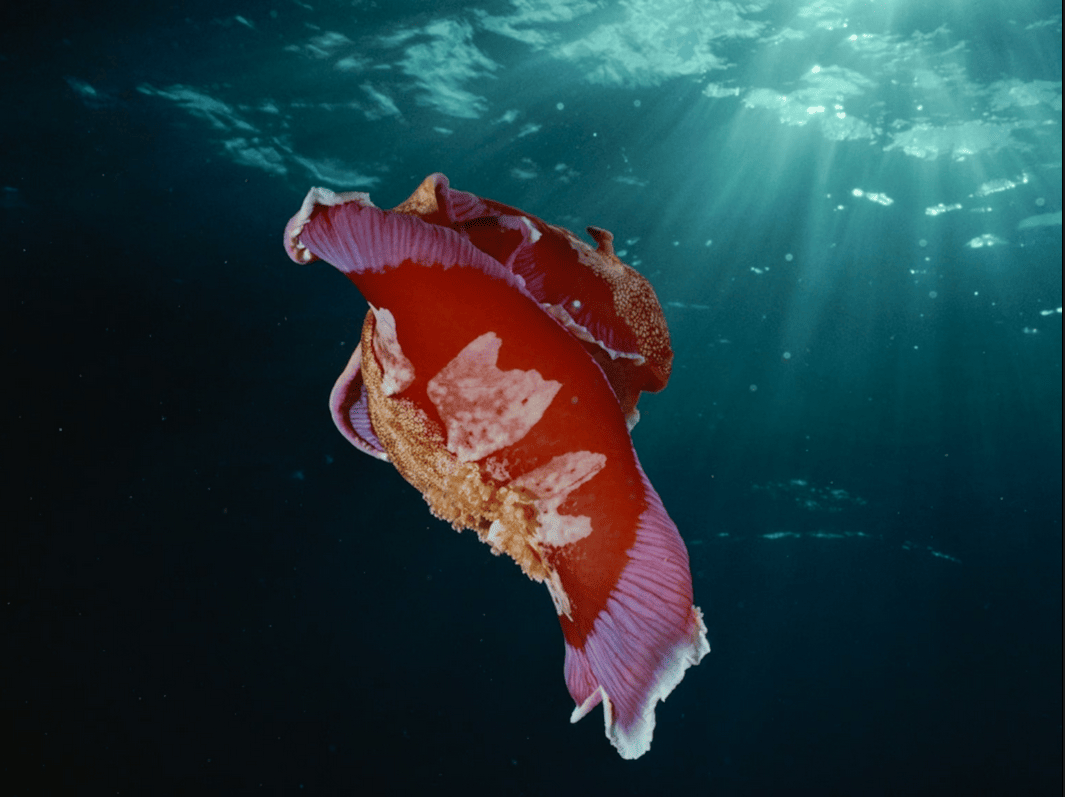Main photo..........Spanish Dancer Nudibranch. Photograph by David Doubilet
There are more than 3,000 known nudibranch species, and scientists estimate there are another 3,000 yet to be discovered. So-called Spanish dancers, like this one off the coast of New South Wales, Australia, boast some distinctions over other nudibranchs: First, they can be enormous, reaching a foot and a half (46 centimeters) long. Most nudibranchs are finger-size. Second, it can swim, a skill most of its cousins lack.
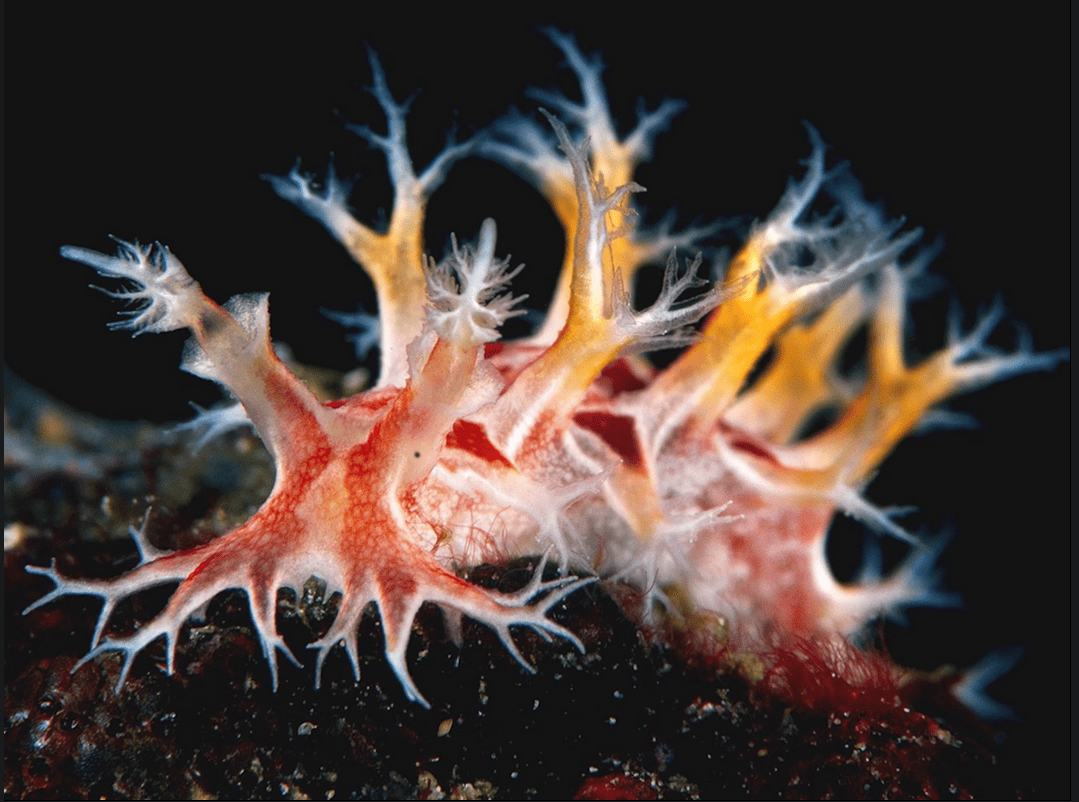
Above, Tritonia Nudibranch. Photograph by Jeffrey de Guzman
Members of the mollusk family, nudibranchs abandoned their shells millions of years ago. Their scientific name, Nudibranchia, means "naked gills," and describes the feathery gills and horns that most, like this Tritonia species, wear on their backs.
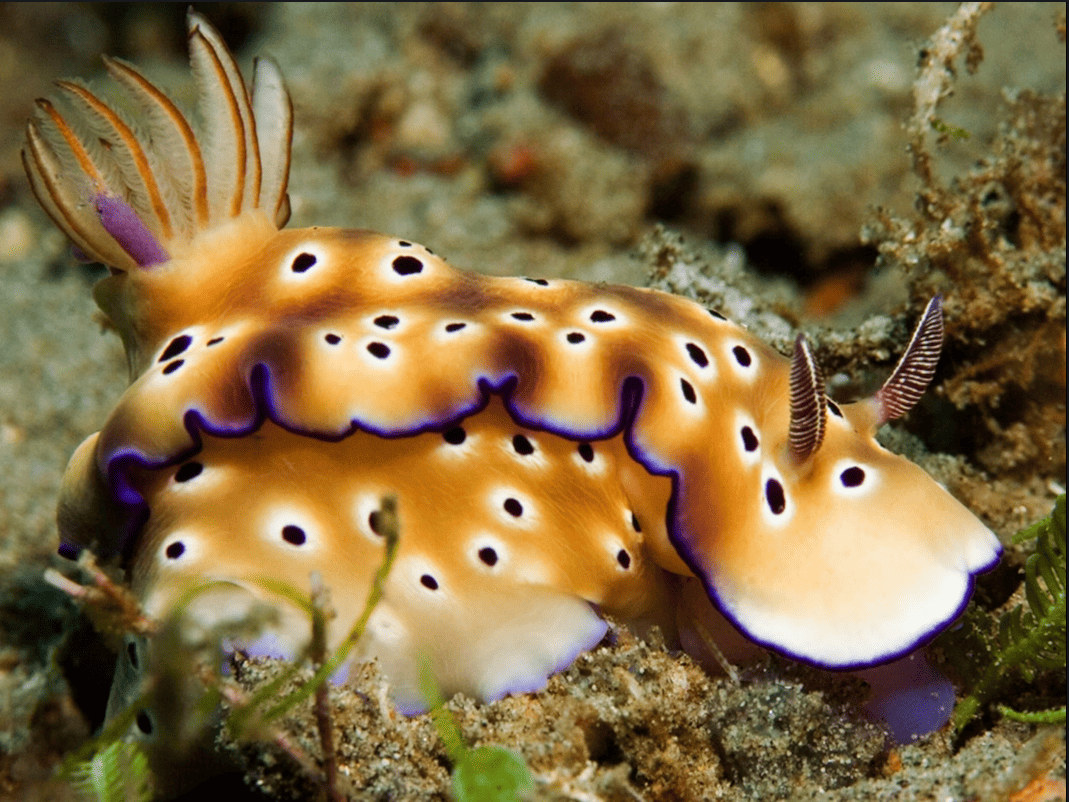
Above, Nudibranch, Philippines. Photograph by Libor Spacek
Nudibranchs, nicknamed "nudis," are best known for the impossible array of colors and designs they sport. They derive coloring, as well as toxicity, from the food they eat. Their wild hues tell potential predators, "You'd best look elsewhere for a meal."
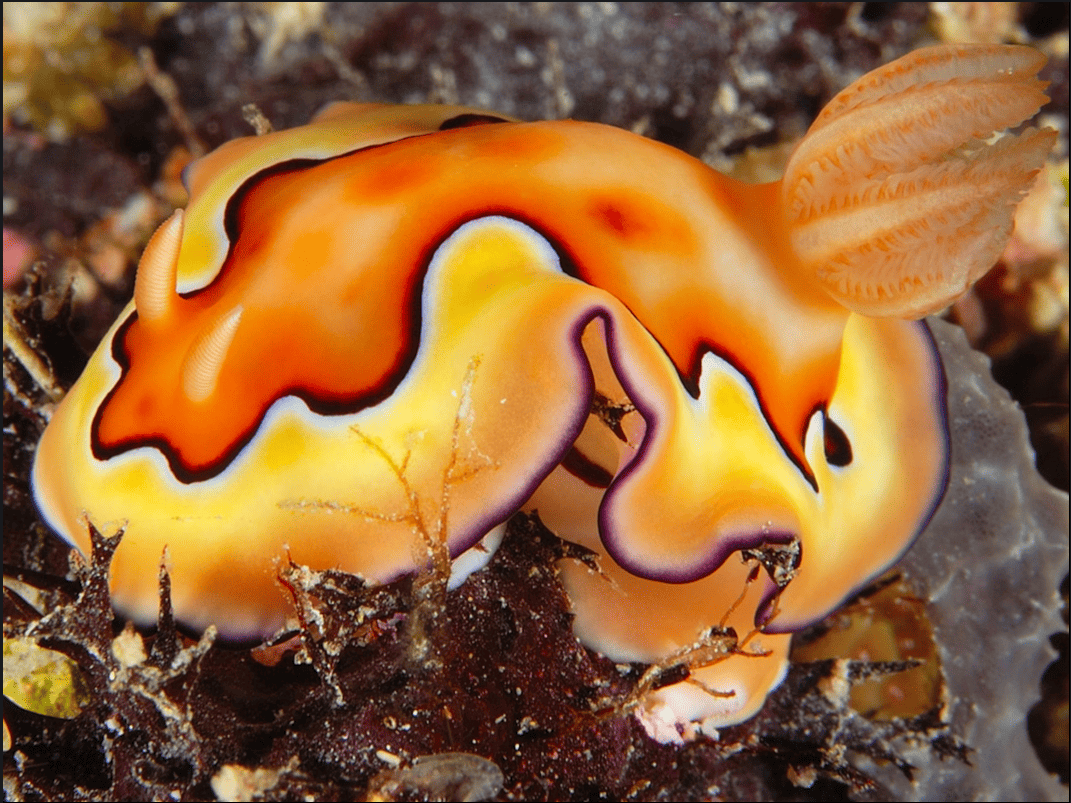
Above, Nudibranch, Palau. Photograph by Ernie Collier
Though partial to tropical climes, nudibranchs thrive throughout the oceans, in warm water and cold, from sandy shallows and reefs to the murky seabed a mile down. Chromodoris nudibranchs, like this one photographed near Palau, are generally a warm-water species.
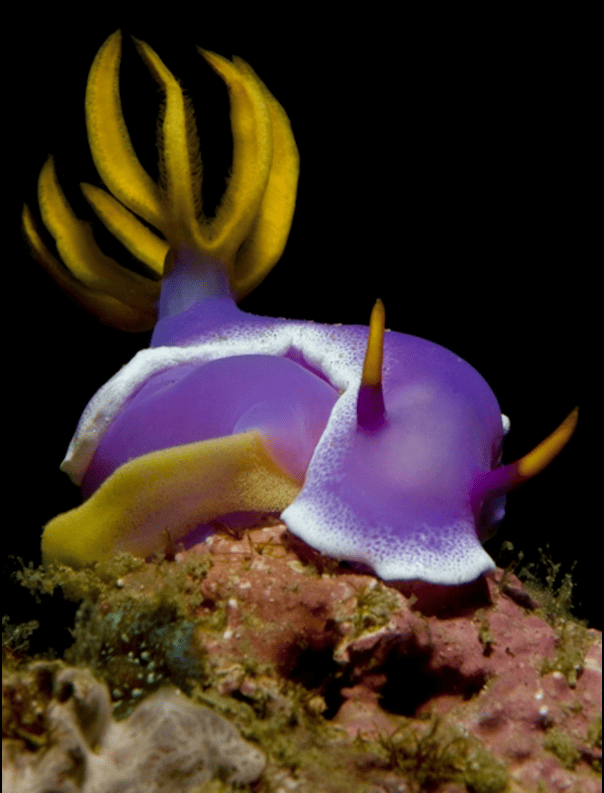
Above, Egg-Laying Nudibranch. Photograph by Jeffrey de Guzman
Nudibranchs are hermaphroditic, carrying both male and female reproductive organs. Mating pairs fertilize one another and lay up to two million eggs in coils, ribbons, or tangled clumps, as this purple-painted Hypselodoris is doing.
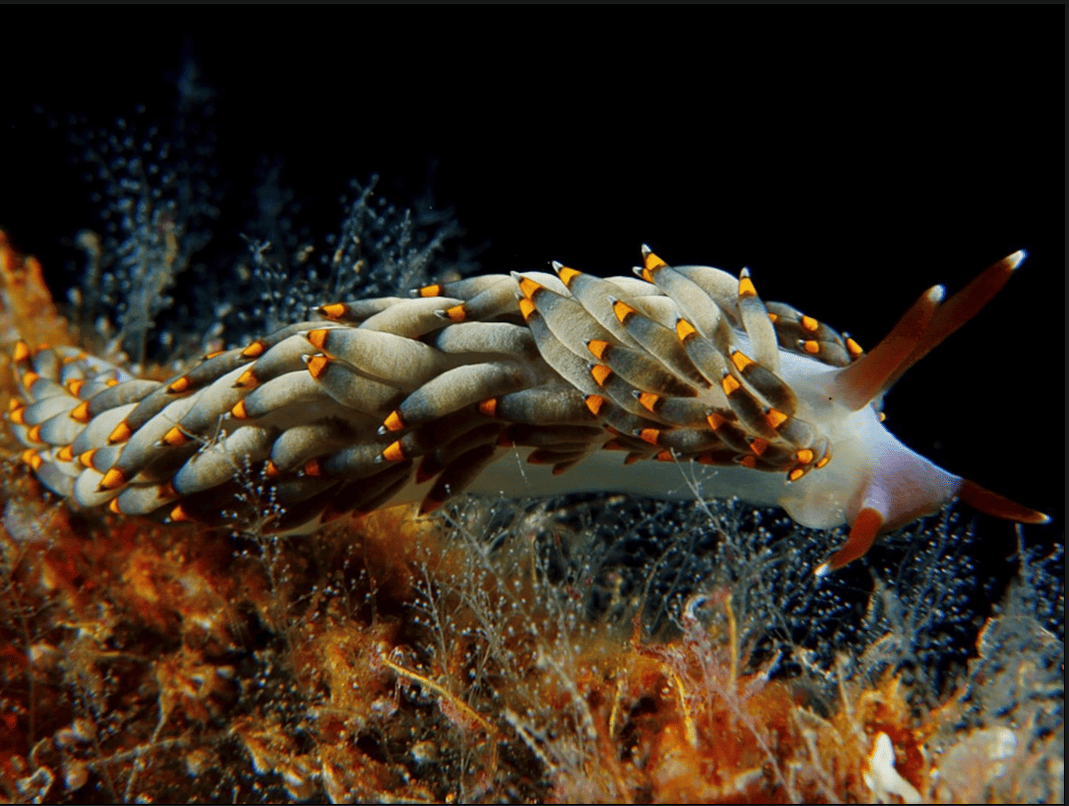
Above, Green-and-Orange Nudibranch. Photograph by Jeffrey de Guzman
Nudibranchs are blind to their own beauty, their tiny eyes discerning little more than light and dark. Instead the animals smell, taste, and feel their world using head-mounted sensory appendages called rhinophores and oral tentacles.
All text and photos from National Geographic
